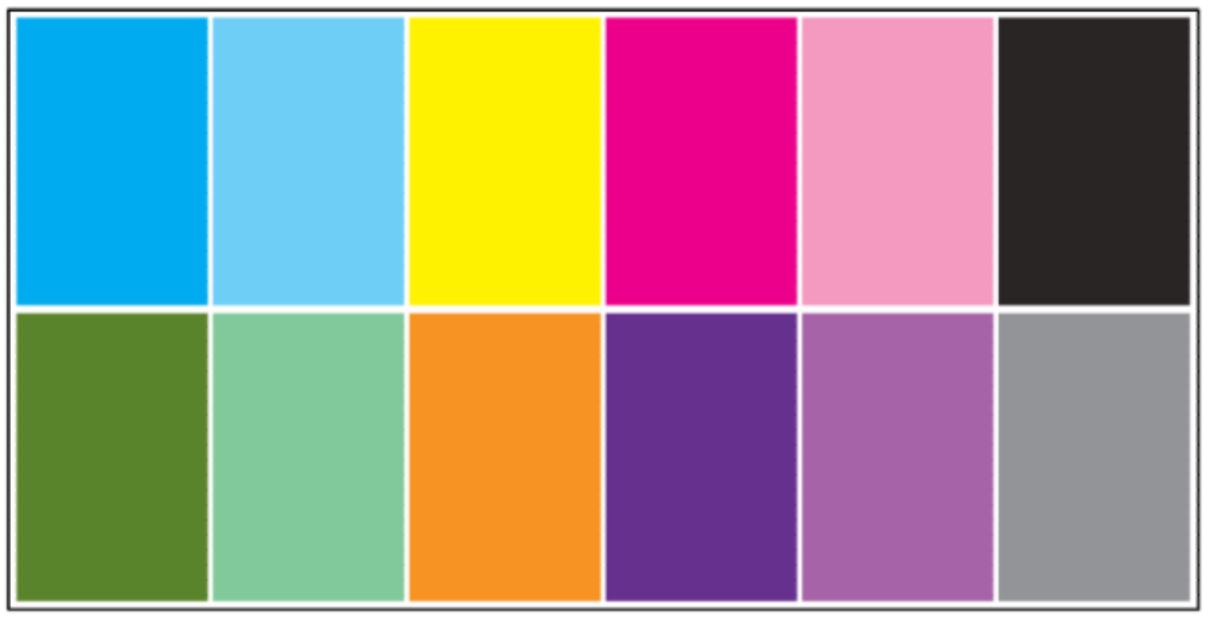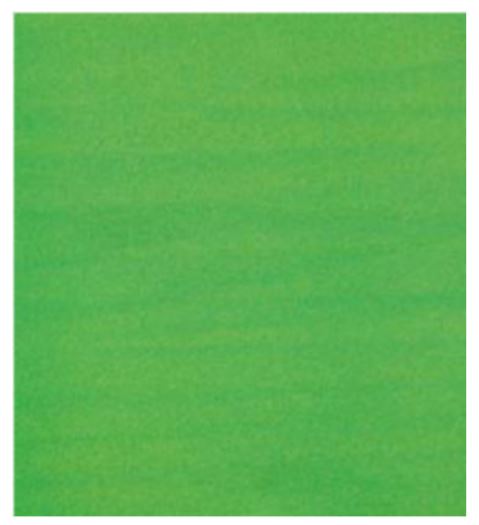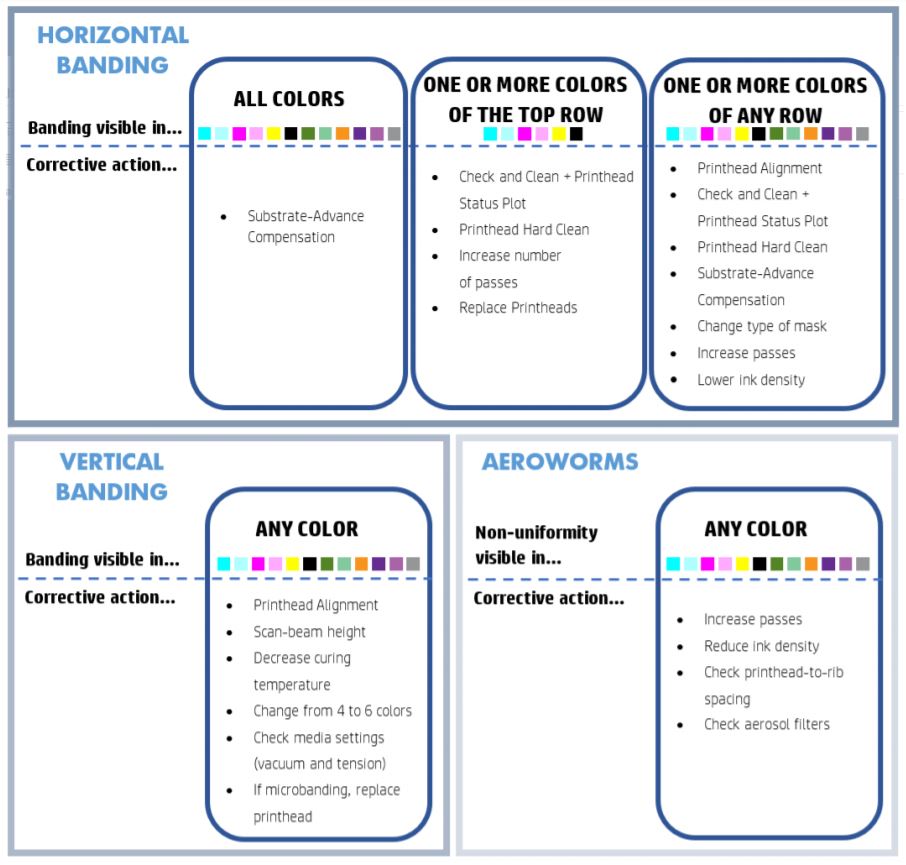
The Image Quality Inspection Tool in the HP Latex 1500 Printer is designed to provide a guided troubleshooting process for users facing banding issues, especially horizontal banding. The tool consists of two parts: an image to print, and a guide for the troubleshooting process.
The image above consists of 12 solid area ƭlls of 7.62 cm x 22.86 cm (3 x 9 in). The six rectangles in the top row are printed by a single ink each, and the six rectangles in the bottom row are secondary or tertiary colors printed using more than one ink. Note that colors in this image may diƫer from the ones expected. This is the desired behavior since this image is not used to verify color accuracy. This plot can be printed from the Internal Print Server in the Printer menu.
When facing banding issues, print the Image Quality Inspection Plot from the Printer menu: go to Printer > IQ Inspection > Add New Job. This will add a job to the print queue. To print it, edit the details of the job to select the substrate and print mode you want to check. Once the plot has printed, start the troubleshooting process. See the Image Quality Troubleshooting Process image at the end of this section for a summary diagram of the troubleshooting process.
1. Determine if the banding in the image is caused by aeroworms. Aeroworms are thin bands with a higher density than the surrounding area that appear randomly and are not continuous across the substrate.

To correct this kind of non-uniformity:
- Increase the number of passes
- Reduce the ink density
- Check the carriage beam position
- Check the aerosol ƭlters
2. If the banding is not caused by aeroworms, continue with the following procedure:
- a. Horizontal banding
- Banding present in all colors:
- Check the Substrate-Advance Compensation and calibrate if necessary. ( Printer menu > Advance calibration …)
- Banding in one or more colors of the top row:
- Execute a check and clean routine, print the printhead status plot and check the number of blocked nozzles.
- If the number of blocked nozzles is roughly greater than 300 in any printhead, perform a hard cleaning routine, selecting the colors aƫected.
- After executing the cleaning routines, reprint the printhead status plot, the image quality troubleshooting plot, and check the current state of the printheads (expect to see less nozzles clogged) and of the banding. If banding is still visible, increase the number of passes.
- If none of the above work, replace the printhead that caused the banding (the one with most nozzles clogged).
- If the problem persists after replacing the printhead, consider it may be a substrate compatibility issue.
- iii. Banding in one or more colors of any row:
- Execute printhead alignment and recheck uniformity with the Image Quality Troubleshooting Plot.
- Execute check and clean, print the Printhead Status Plot, and check the number of blocked nozzles. If the number of blocked nozzles is greater than 300 in any printhead, perform a hard cleaning routine, selecting the colors aƫected.
- Check the Substrate-Advance Compensation and calibrate if necessary.
- Change the type of mask and/or increase the number of passes.
- Reduce ink density.
- f. If the problem persists after all the corrective actions, consider it may be a substrate compatibility issue.
- Banding present in all colors:
- b. Vertical Banding
- Wide bands:
- Execute a printhead alignment.
- Check carriage beam position.
- Decrease curing temperature to reduce deformation.
- Change from 4 to 6 colors to reduce grain.
- Check substrate settings (vacuum and tension).
- Microbanding (vertical high-frequency lines, less than 2mm [0.08 in] wide):
- Print the Printhead Alignment Plot to see the printhead responsible, and replace it.
- Wide bands:
3. After ƭnishing the troubleshooting process, delete the image quality inspection job from the queue, and keep the ƭles on the disk.











